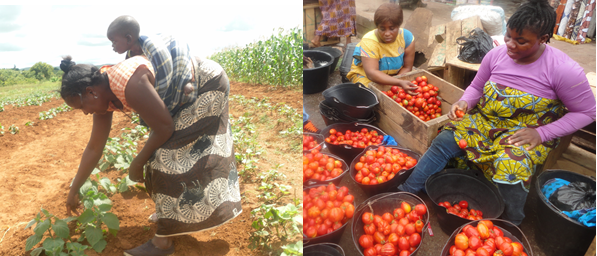‘Best practice’ is not even a mouthful but what it means in practice remains unclear to many people who use the phrase. In African agriculture, it takes a lot for a farmer or trader to become a best practitioner. Most value chain actors face challenges in identifying sufficient quality evidence that can be translated into best practice. In the absence of consensus, they either rely on what is effective locally or depend on external extension agents, most of who lack contextual knowledge. While look and learn visits have become prominent ways through which farmers are expected to acquire best practices, there is lack of empirical evidence. Contextual differences make it difficult to draw conclusions about the effectiveness of conservation agriculture, contract farming and other practices.
Season-informed best practices
In the majority of African farming communities, seasons have a much larger influence on the evolution of best practices. It takes a minimum of three farming seasons of producing a particular crop for a new farmer to attain best practice status. This three year experience pulls farmers closer to best practice, with a farmer using particular crops to move through summer, autumn, winter and spring. Crop behaviour is different during each of these seasons. The hot season, commonly called Spring stretches from late August to December in Southern Africa and has its own features which impact crops and livestock in different ways. Summer is characterised by fungal diseases due to excessive moisture and too much rainfall triggers extreme crop growth patterns. On the other hand, winter is characterised by low temperatures which limit crop growth. While there are fewer diseases, all crops do not grow fast in winter. During Spring, crops are exposed to excessive heat and low moisture levels. Pests like aphids, leaf minor and white fly are common in this period.

Growth patterns, quality and yields are different in each season, irrespective of inputs. That is why curiosity is very important among farmers. Farmers who are not curious may not notice the difference between spring and summer. Curiosity will enables thorough understanding of crop and livestock behaviour in response to different seasons.
The next learning curve
Having gone through three cycles of each season, a competent farmer begins to focus on monitoring the changing characteristics of the seasons. One summer season is too wet with floods being experienced while the next can have less rain and less moisture. One winter is too cold and frosty while the other has wild frost, with yet another experiencing no frost at all. One spring is too dry with heat waves. After less than an hour of irrigation the soil becomes completely dry as moisture evaporates. Another spring can have normal heat. Sometimes winter over-stretches into Spring. Late onset of Spring or summer is another characteristic worth monitoring. A three to five year cycle of monitoring seasons is very important depending on area.
The market can only go so far
As demonstrated above, every season has its lessons. If a farmer decides to grow tomatoes only when the price is good, s/he may not have acquired enough knowledge to understand diseases and pests that occur at different stages of the growing period. The market can only tell you what to produce and when. It can also give you a price guide. However, it may not tell you everything you needed to achieve best practices. Best practice does not come from text books or lectures. You have to practically engage and get your hands dirty.
A major handicap is that farmers do not document what they see during each season in order to improve. With documentation it should become possible to translate the knowledge into a ‘Farming Bible’ which the future generation can read and learn from. Due to lack of a documentation culture, most of the existing knowledge is too general to be useful in attaining best practice standards. Farmers who do not record what they see on their farms are vulnerable to wrong advice. Documentation ensures they are able to correct wrong information through comparison as well as mixing and matching what they know with what is coming from outside.
The mindset is more important than the toolbox
It is through the right mindset that farming communities can leverage the strengths of complementary agricultural programmes. For instance, they can see the connection between livestock and crop programmes that are implemented separately by separate programmes in a one community. That means, as frontline value chain actors, farmers are best placed to identify and explain linkages between different agricultural programmes. Getting a mentor is not enough if a new farmer or trader does not have the right mindset and beliefs because these can limit the application of new skills. In addition, the wrong advice can become a mental obstacle to be overcome first before acquiring skills that lead to best practice. Ultimately farmers and traders should focus on getting more buyers interested in their commodities than building larger toolboxes. Without such capacity and knowledge it is difficult to sustainably implement proven agricultural practices.
charles@knowledgetransafrica.com / charles@emkambo.co.zw / info@knowledgetransafrica.com
Website: www.emkambo.co.zw / www.knowledgetransafrica.com
eMkambo Call Centre: 0771 859000-5/ 0716 331140-5 / 0739 866 343-6
